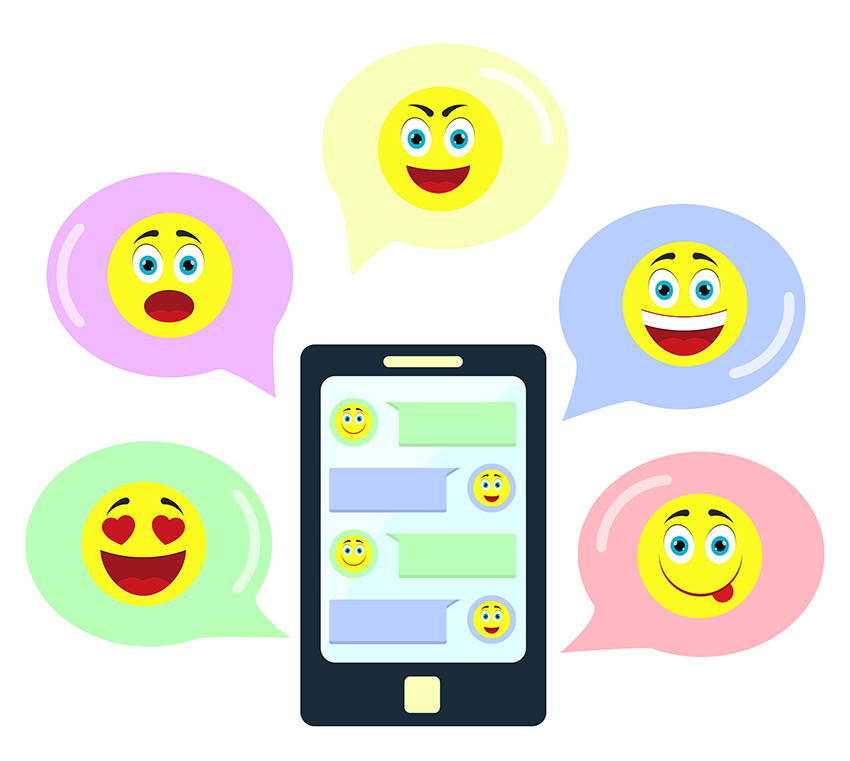Emojis, the funny faces and colorful symbols you see and use in your texts, chats, posts, and emails, are one of the most distinctive aspects of online communication.
They can be tiny pictures of human faces, animal faces, hearts, flowers, fruit, and just about anything else you can think of. Many computer programs, tablets, and smartphones today offer them as one of their standard features.
A study by SwiftKey, maker of input productivity apps, offers interesting insight into how people around the world use emojis:
- The most popular emojis around the world, in general, are happy faces (44.8 percent) followed by sad faces (14.3 percent), hearts (12.5 percent), and hand gestures (5.3 percent).
- The French are the biggest users of heart emojis.
- Canadians use the most sports-oriented emojis.
- Americans are the heaviest users of emojis related to bags of money, basketballs, birthday cakes, slices of pizza, and eggplants.
(The SwiftKey study also found the most popular emjois by state. View the results here.)
In addition, SwiftKey found nearly half of Instagram comments include emojis.
However, most people on Facebook express laughter the old-fashioned way. A new Facebook study shows 51.4 percent of Facebook subscribers use haha (or a variation such as hahaha or haahhhaa, 33.7 percent use an emoji, 13.1 percent use hehe, and 1.9 percent use LOL (laughing out loud). Still another way of expressing laughter or a grin, not measured in the study, is < g >.
Some traditionalists avoid and even scorn emoticons and, regarding them as silly modern crutches. But emoticons, acronyms, and similar conventions aren't new. Telegraph operators in the mid-19th century used acronyms such as IMHO (in my humble opinion) and FWIW (for what it's worth) when communicating among themselves, according to the book The Victorian Internet by Tom Standage. Later, teletype operators used emoticons when chatting. In both cases, it was to save time.
What's more, question marks, exclamation points, and other standard punctuation also promote the correct understanding of meaning, and this is the reason they came into use in the first place.
The exclamation mark was introduced into English printing in the 15th century. As with emoticons, the exclamation mark's usage varies in different parts of the world. In French and German, for instance, it can be used after a nonexclamatory request. The question mark came into being in its present form in the 13th century.
Not all new punctuation marks catch on. In the 19th century, the "irony mark," a small, elevated, backward-facing question mark, was unsuccessfully proposed to signify that a sentence has a secondary meaning, such as irony or sarcasm.
Though it hasn't happened yet, some emoticons might someday become as accepted as exclamation points and question marks. Until they do, it's safe to assume emoticons and emojis are inappropriate in some situations, such as in buttoned-down business writing, for example, and that using them there won't make you look good.
Probably the best advice for the use of emoticons and emojis in online communication is to follow the conventions of those with which you're communicating. Most important, you want to make sure your readers understand what you're trying to say.
